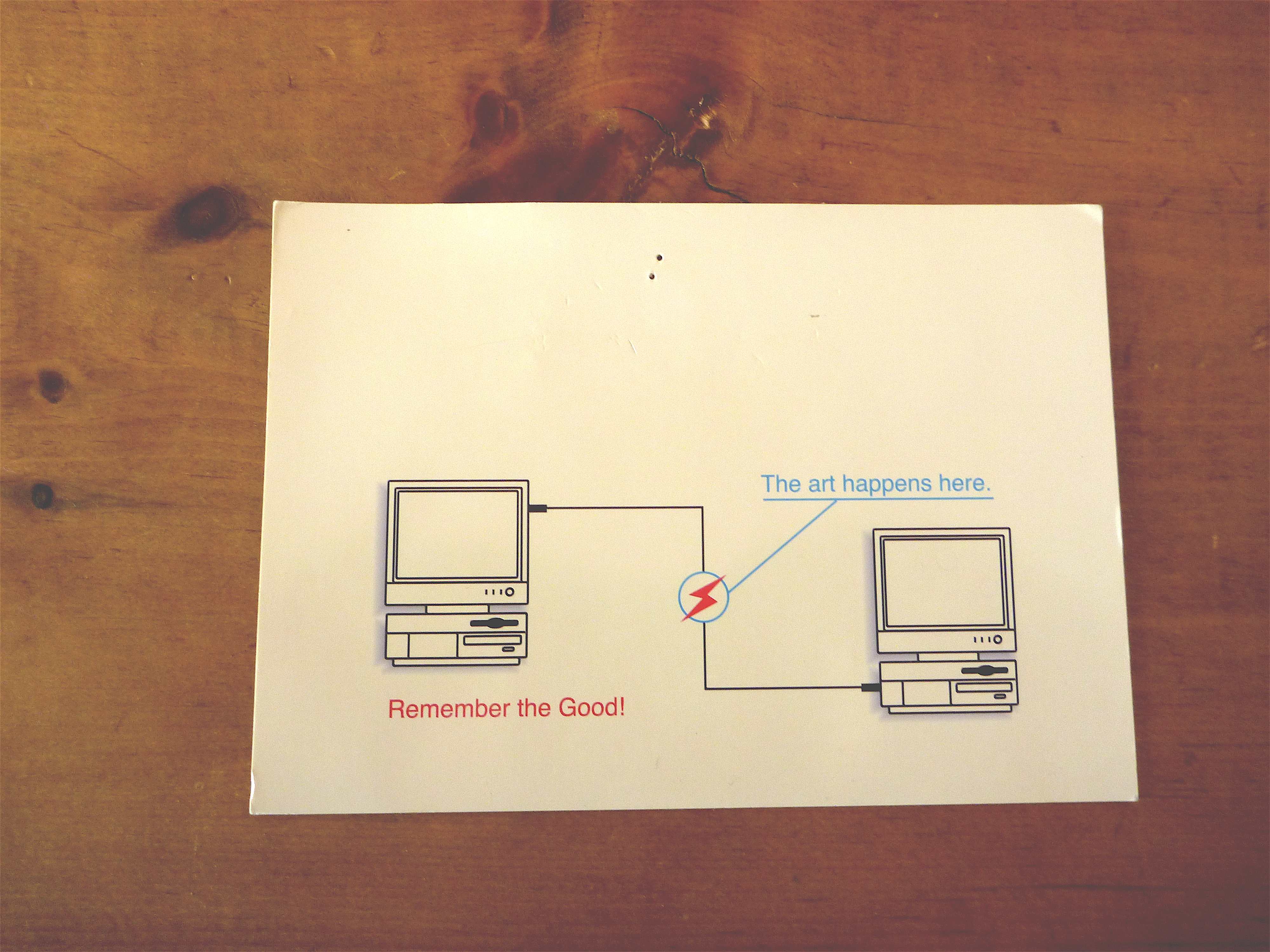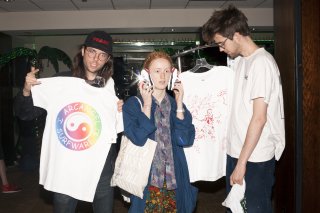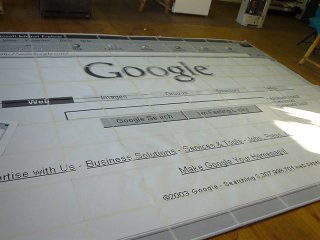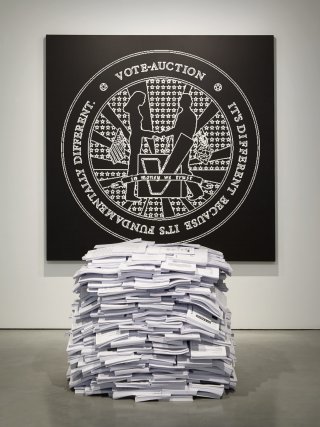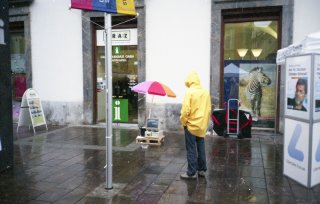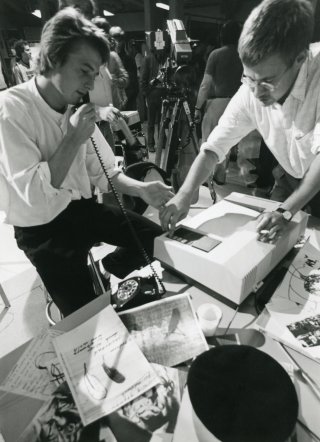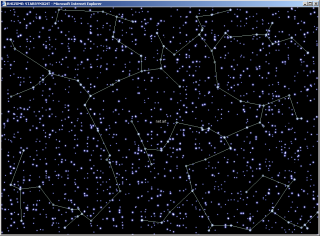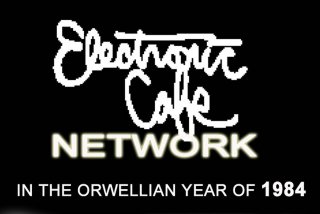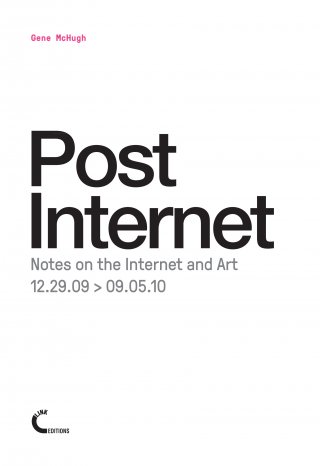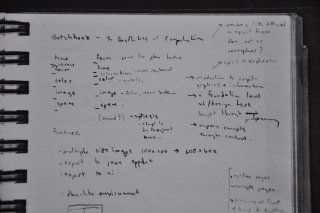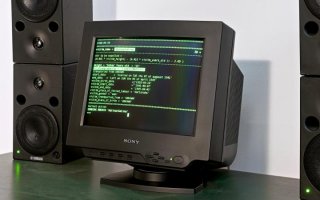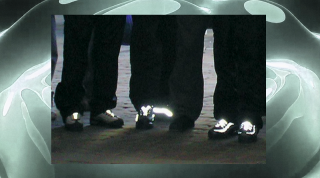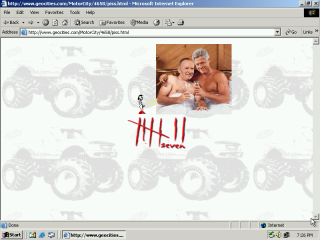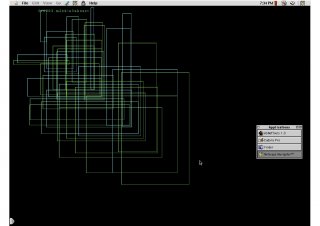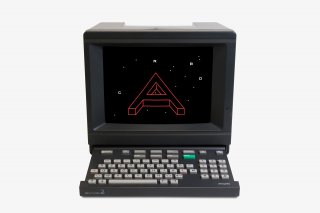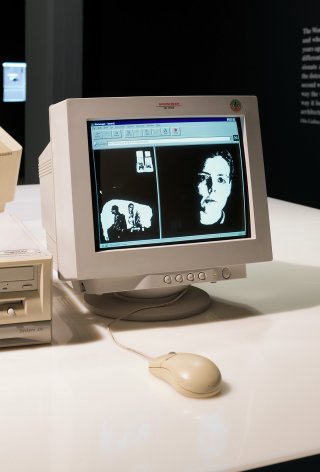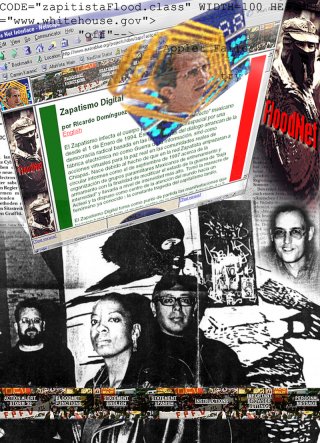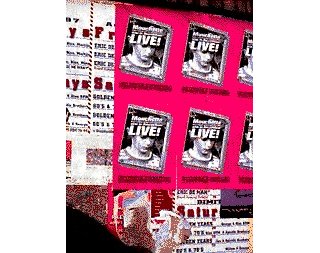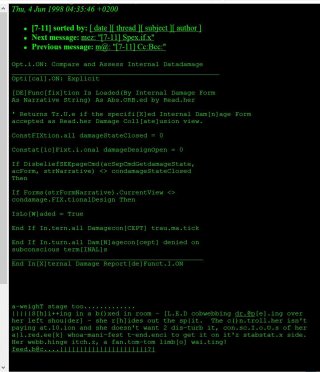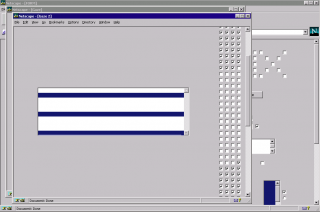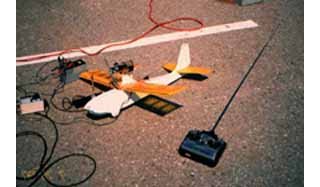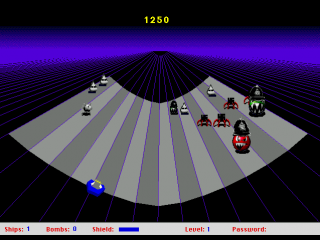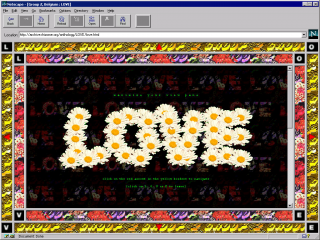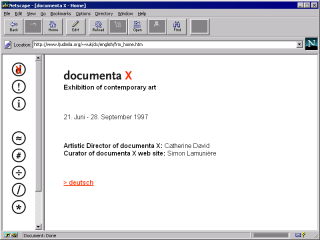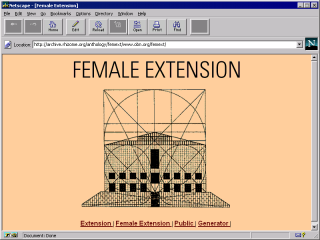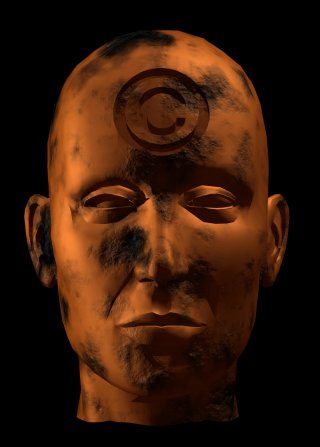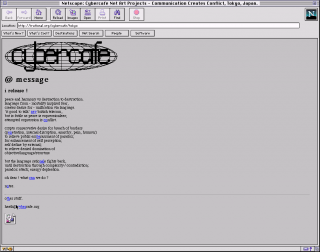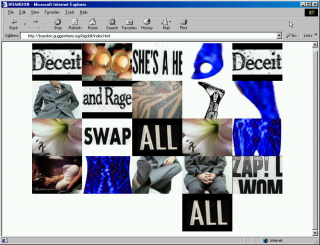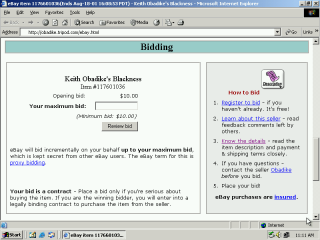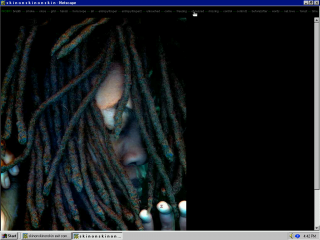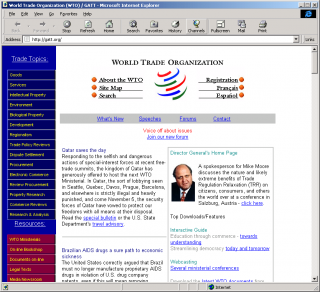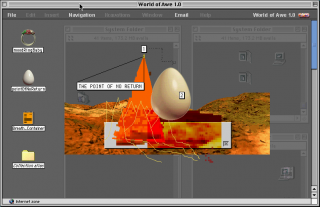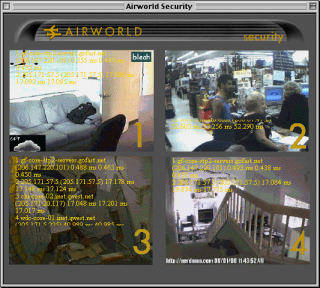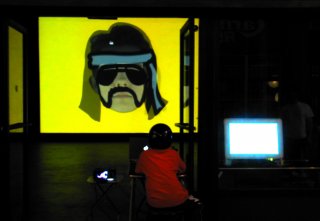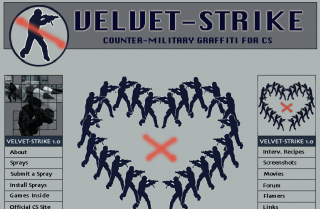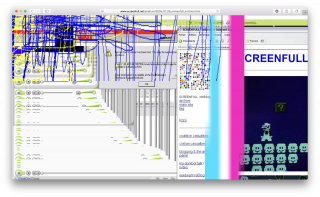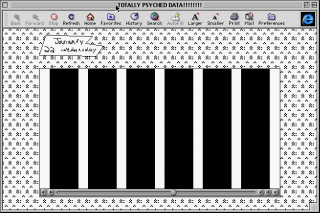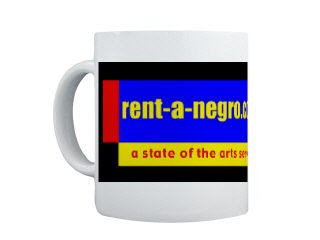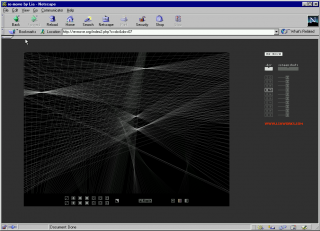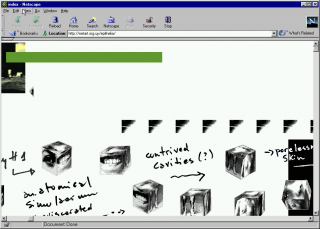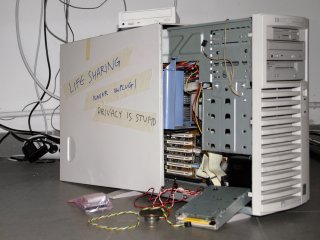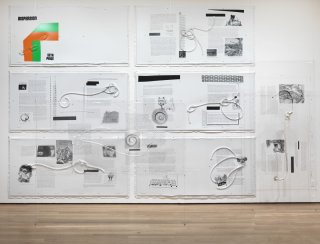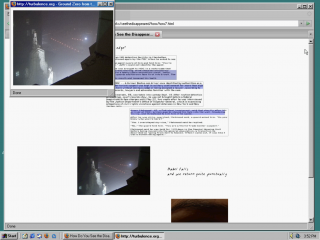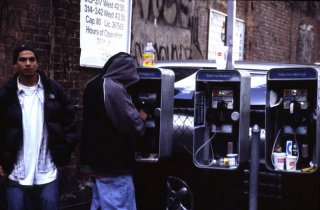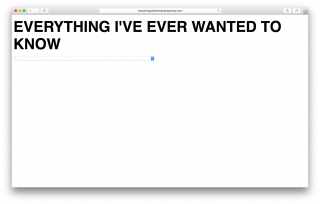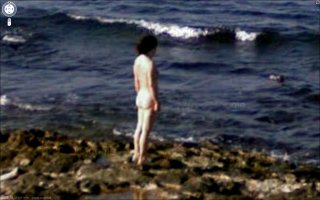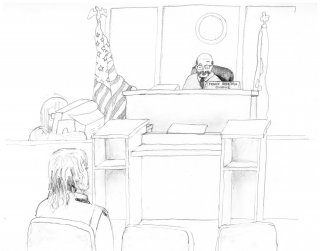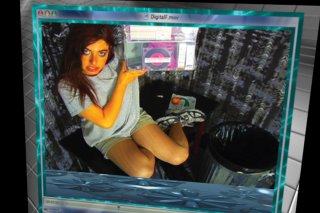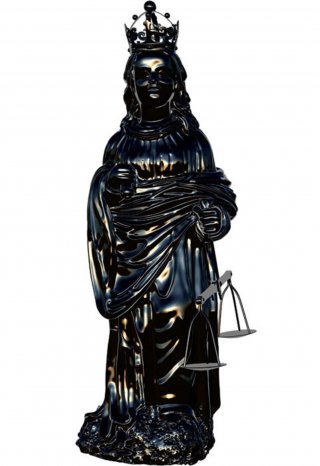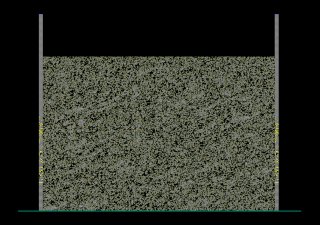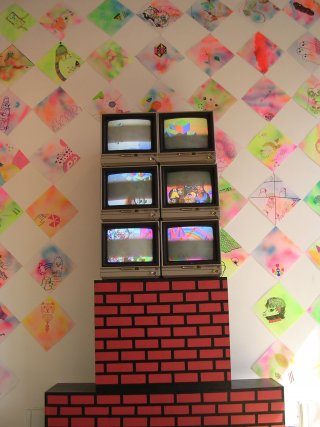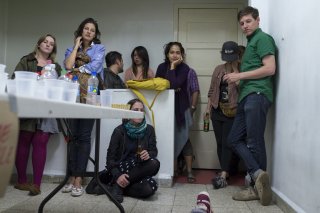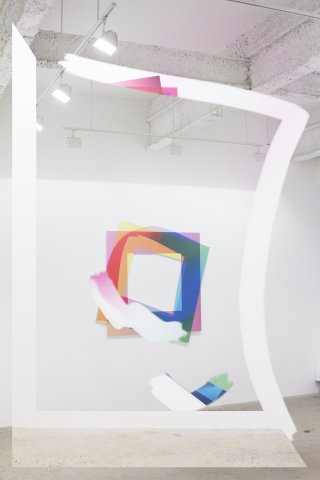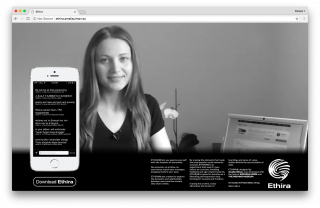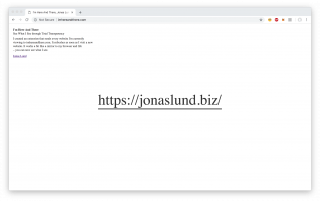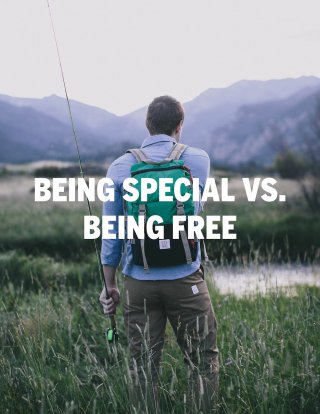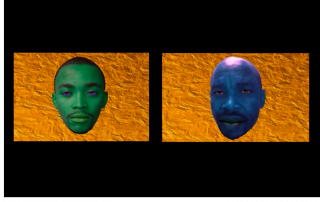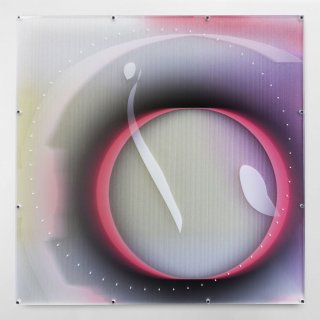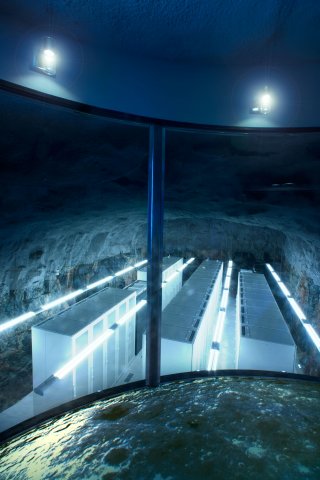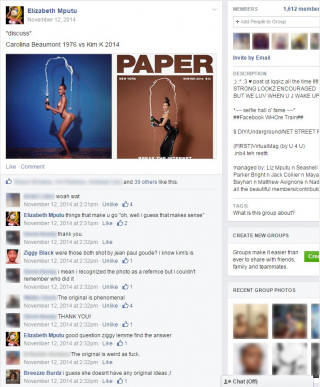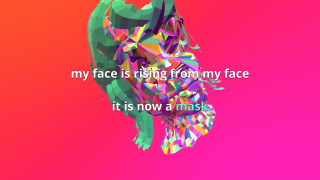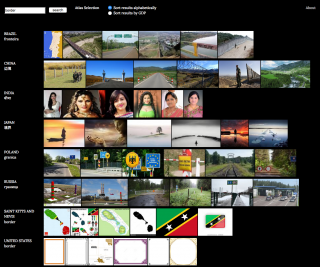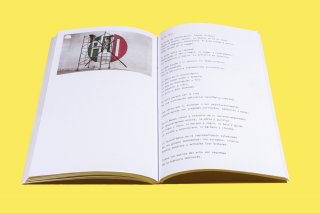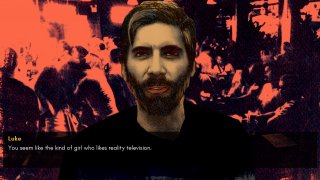Retelling the history of net art from the 1980s to the 2010s.
Devised in concert with Rhizome's acclaimed digital preservation department, Net Art Anthology aims to address the shortage of historical perspectives on a field in which even the most prominent artworks are often inaccessible. The series takes on the complex task of identifying, preserving, and presenting 100 exemplary works in a field characterized by broad participation, diverse practices, promiscuous collaboration, and rapidly shifting formal and aesthetic standards, sketching a possible net art canon.
This project was accompanied by a gallery exhibition, "The Art Happens Here," which was premiered at the New Museum in NYC in winter 2019, and will undertake a national tour through 2020. Alongside, Rhizome published a 440-page catalogue detailing the whole project — buy it today!
Net Art Anthology was launched in 2016 and completed in June 2019. Additional material related to Anthology works, as well as updated restorations may be added from time to time into the future.
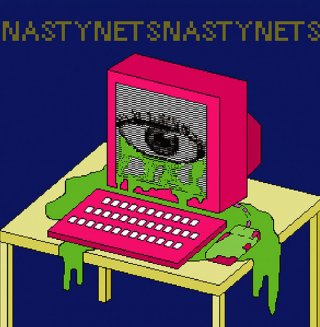 Nasty Nets
JOHN MICHAEL BOLING, JOEL HOLMBERG, GUTHRIE LONERGAN, MARISA OLSON, ET AL
2006
- 2012
Nasty Nets
JOHN MICHAEL BOLING, JOEL HOLMBERG, GUTHRIE LONERGAN, MARISA OLSON, ET AL
2006
- 2012
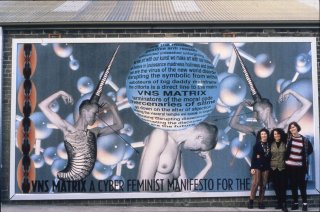 A Cyberfeminist Manifesto for the 21st Century
VNS Matrix (Josephine Starrs, Julianne Pierce, Francesca da Rimini, and Virginia Barratt)
1991
A Cyberfeminist Manifesto for the 21st Century
VNS Matrix (Josephine Starrs, Julianne Pierce, Francesca da Rimini, and Virginia Barratt)
1991
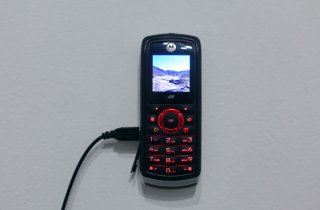 Transborder Immigrant Tool
Electronic Disturbance Theater 2.0/b.a.n.g. lab (Micha Cárdenas, Amy Sara Carroll, Ricardo Dominguez, Elle Mehrmand, and Brett Stalbaum)
2007
- ongoing
Transborder Immigrant Tool
Electronic Disturbance Theater 2.0/b.a.n.g. lab (Micha Cárdenas, Amy Sara Carroll, Ricardo Dominguez, Elle Mehrmand, and Brett Stalbaum)
2007
- ongoing
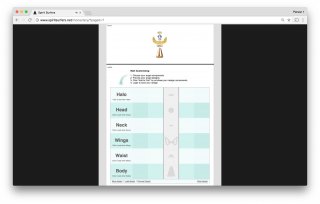 Spirit Surfers
Kevin Bewersdorf, Paul Slocum, Marcin Ramocki, Ethan Hayes-Chute, John Transue, Luke Murphy, Krist Wood, Aron Namenwirth, Harm van den Dorpel, Dragan Espenschied, Travis Hallenbeck, Olia Lialina, Peter Wilson, Patrick Armstrong, Patrick Groth, Peter Blasser, Chad Hopper, Rachel Abelson, Petra Cortright
2008
- ongoing
Spirit Surfers
Kevin Bewersdorf, Paul Slocum, Marcin Ramocki, Ethan Hayes-Chute, John Transue, Luke Murphy, Krist Wood, Aron Namenwirth, Harm van den Dorpel, Dragan Espenschied, Travis Hallenbeck, Olia Lialina, Peter Wilson, Patrick Armstrong, Patrick Groth, Peter Blasser, Chad Hopper, Rachel Abelson, Petra Cortright
2008
- ongoing
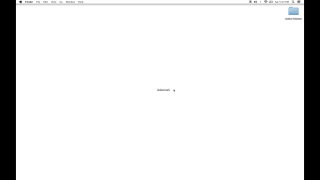 Contra-Internet Inversion Practice #1: Constituting an Outside (Utopian Plagiarism)
Zach Blas
2015
Contra-Internet Inversion Practice #1: Constituting an Outside (Utopian Plagiarism)
Zach Blas
2015
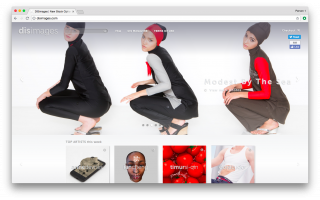 DIS Images
DIS (LAUREN BOYLE, SOLOMON CHASE, MARCO ROSO, DAVID TORO, AND COLLABORATORS)
2013
DIS Images
DIS (LAUREN BOYLE, SOLOMON CHASE, MARCO ROSO, DAVID TORO, AND COLLABORATORS)
2013
Rhizome Staff
- Mark Beasley, Senior Front-End Developer, Webrecorder
- Michael Connor, Artistic Director
- Aria Dean, Assistant Curator of Net Art
- Dragan Espenschied, Preservation Director
- Zachary Kaplan, Executive Director
- Nora N. Khan, Special Projects Editor
- Ilya Kreymer, Software Director
- Lyndsey Jane Moulds, Software Curator
- Pat Shiu, Associate Director, Design
- Lauren Studebaker, Community Manager
- Paul Soulellis, Contributing Editor
Site Design
- Lukas Eigler-Harding
Advisors (Chapters 1 and 2)
- Inke Arns
- Josephine Bosma
- Steve Dietz
- Ricardo Dominguez
- Auriea Harvey
- Brian MacKern
- Monica Narula
- Mendi + Keith Obadike
ADDITIONAL SUPPORT
Google & Google Arts & Culture generously support Rhizome's digital preservation program.
| Presented By |  |
| An Affiliate Organization of |
 |
| Made possible by the Generous Support Of |
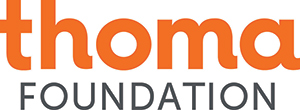 |
STRUCTURE
Net Art Anthology will play out in five distinct chapters. The first four will be chronological: early network cultures and early web (through 1998); Flash and blogs (1999-2005); surf clubs, early postinternet art, and social media platforms (2006-2011); and mobile apps and social media saturation (2012-present). The final chapter will reprise all time periods, addressing gaps that emerge over the course of the project.
CRITERIA
The project specifically celebrates works of net art that:
- Use the net in ways that give expression to emerging subjectivities,
- Model new forms of collective cultural practice, and/or
- Exemplify aesthetic, subjective, political, and conceptual positions that have taken on singular and profound resonance within particular networks of artists.
- Can be meaningfully restaged, reconstructed, or reperformed for this exhibition.
SELECTION
The selection of works for this series is taking place on an ongoing basis, and feedback/suggestions are welcome. The selection is led by Michael Connor and informed by Rhizome staff and a network of external advisors. Feedback can be sent to [email protected].
DEFINITION
Net Art Anthology aims to represent net art as an expansive, hybrid set of artistic practices that overlap with many media and disciplines. To accommodate this diversity of practice, Rhizome has defined "net art" as "art that acts on the network, or is acted on by it."
Rhizome prefers the term "net art" because it has been used more widely by artists than "internet art," which is more commonly used by institutions, or "net.art," which usually evokes a specific mid-90s movement. The informality of the term "net art" is also appropriate not only to the critical use of the web as an artistic medium, but also informal practices such as selfies and Twitter poems.
